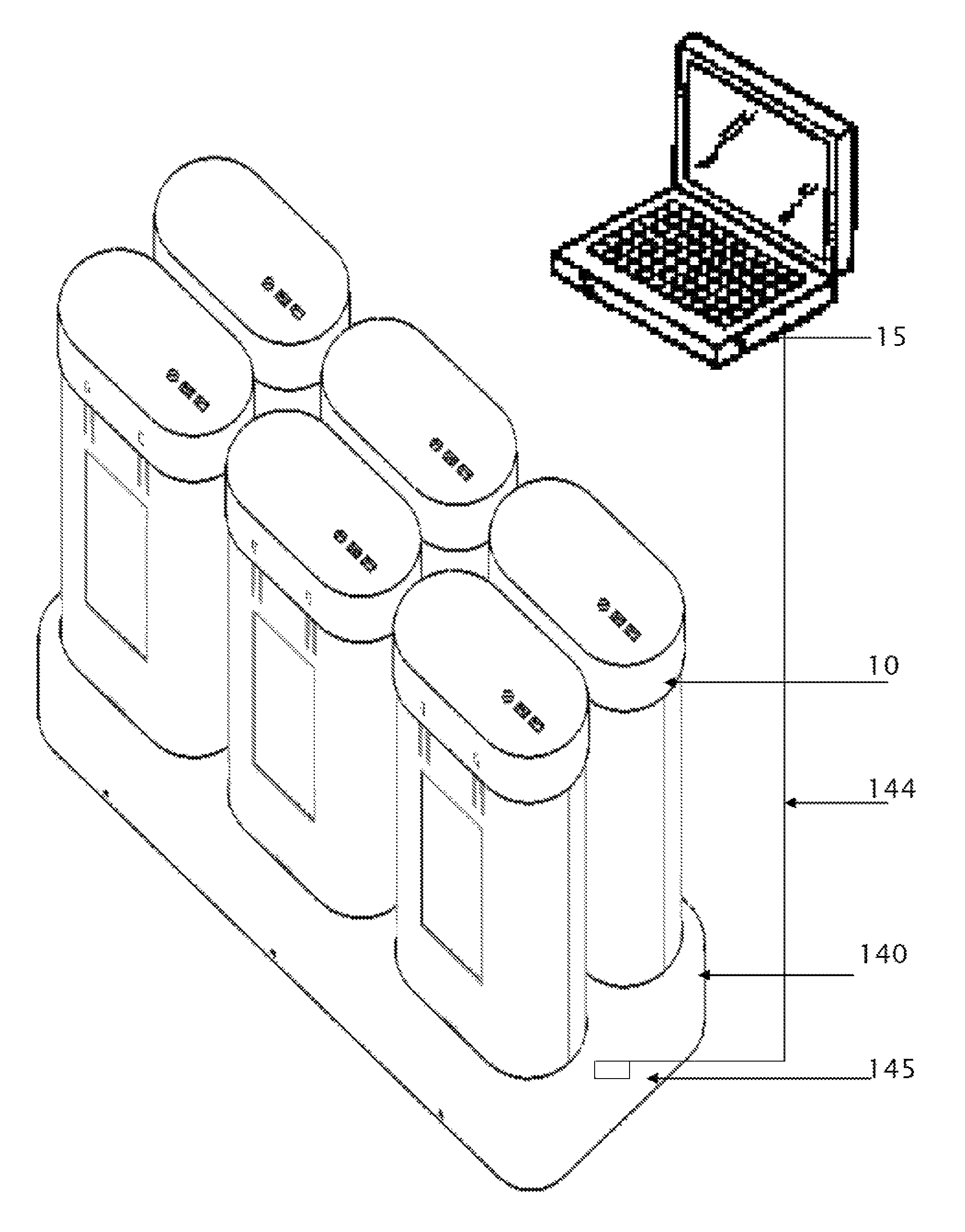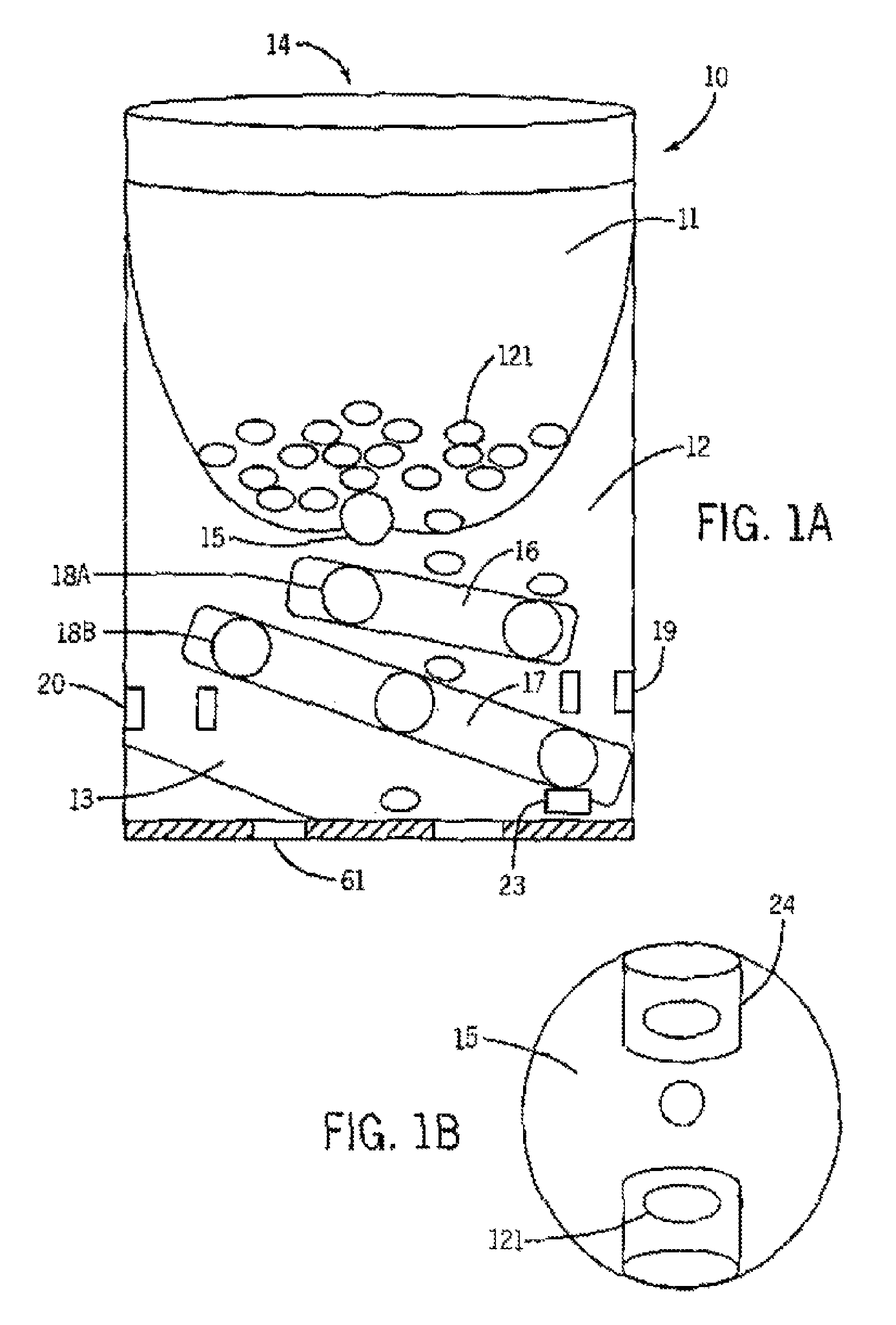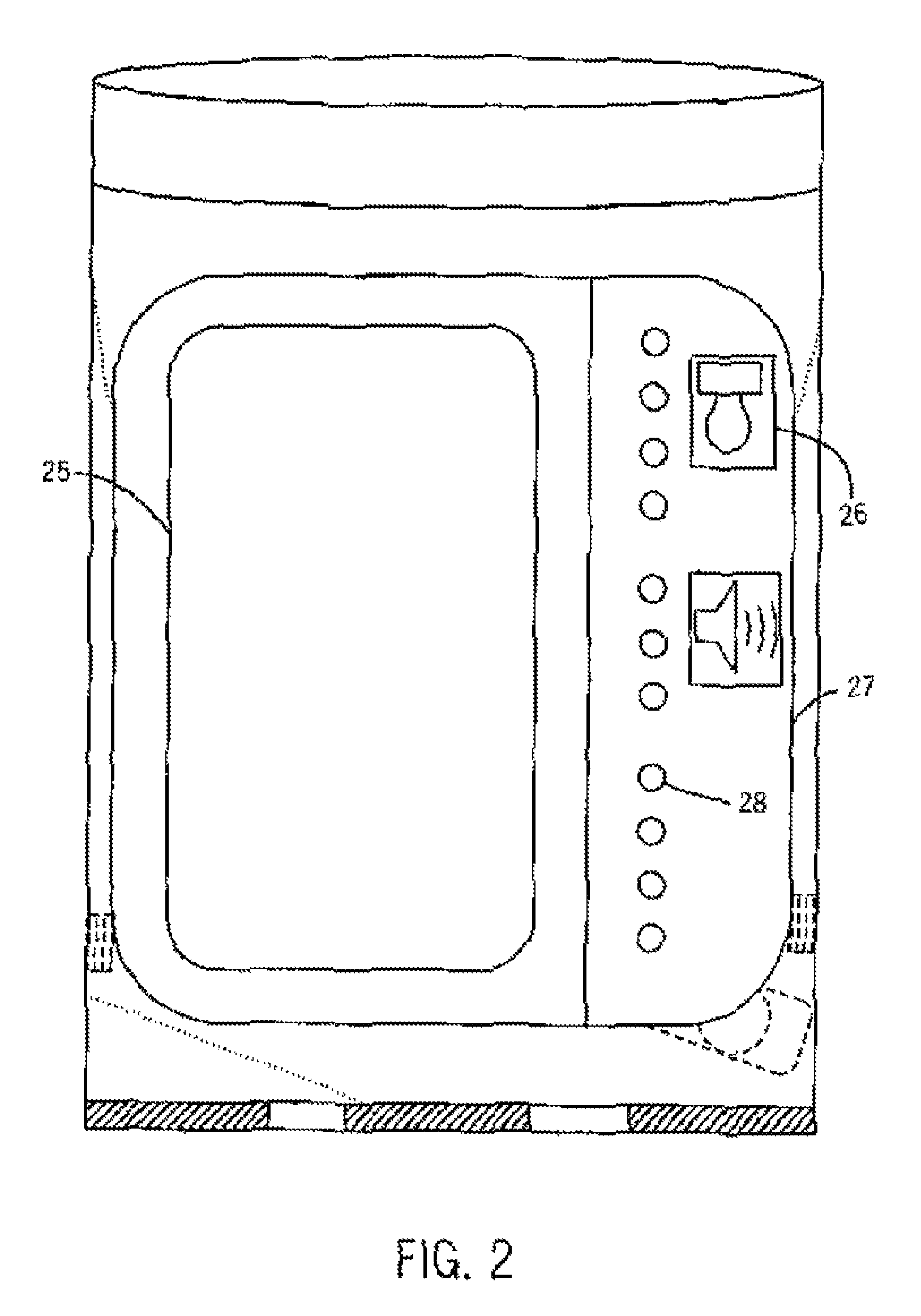A patient may have difficulty remembering to take medicine at recommended times. Sometimes, patients have difficulty remembering that they have already taken a
dose.
Some patients have difficulty remembering the recommended
dose of medicine to be taken, especially if a medicine dose requires more than one pill of the same medicine.
In a multiple
drug regimen, such a
scenario is even more convoluted and may
pose grave consequences to the patient.
In addition, eyesight fade with age and reading labels of medicine containers can present a problem.
In this case, patients are unable to generate a routine based around taking the medicine.
The end result of the above situations is that the amount of medicine taken is either too low to affect the course of the ailment, or is too high and causes overdose reactions.
There are many studies that show that management of chronic diseases is unsatisfactory in
spite of the great advances in medicine.
Factors that have been implicated are 1)
poor compliance with medicine
regimen because patients forget to take their medicines 2) frequent need to go the
pharmacist for refills and education 3) need for frequent visit to the health care professional's office to monitor the
treatment response and to make any required changes in medicine
regimen 4) lack of adequate
health education and inadequate reinforcement thereof 5) under or over dosing of medicine 6) altered
dosing regimen 7) incorrect administration of medicine (Kane S et al.
Even more worrisome is the practice that patients do not inform physicians of their
non compliance with medicine regimen.
This results in unnecessary changes
in patient's medicine regimen which can be detrimental to the health of the patient.
This practice also increases health care cost.
These medicine containers do not have features to assist patients remember to take their medicines or to
record their compliance with a medicine regimen.
While these approaches are viable as long as they are properly used, the indicating position is easily altered and presents no reliable permanent
record.
These devices additionally provide tactile assistance to patients in appropriately repositioning the indicator arms and, when used correctly, may reduce the possibility of patient overdose by restricting improper attempts to advance the indicator arm.
Moreover, with these devices, patients have to learn complex instruction each time a change is made in medicine close or frequency.
However, there are problems with the devices described in the prior art.
These devices entail loading of individual pill storage compartments by the
pharmacist This is a
time consuming and manpower intensive process that makes these devices costly and inefficient.
None of these devices provide the ease and
cost effectiveness of the
present day throwaway plastic medicine containers where a bulk supply of medicaments can be dispensed at one time.
There are major disadvantages to the inventions that rely on medicine container cap removal as a measure of compliance.
Once the device recognizes the removal of the cap, any number of doses may be removed from the
bottle without proper recognition, thus seriously compromising the device's ability to properly
record compliance.
Even more troublesome is the possibility that the
cap device might not be reinstalled on the
bottle; if not, the subsequent removal of medicines from the
bottle go unmonitored.
In addition, the devices described in prior inventions share some common drawbacks that include: 1) none of the prior art devices have the ability to automatically count and dispense a prescribed quantity of medicine at prescribed times from a bulk supply within the medicine container.
2) These devices do not provide airy protection against abuse of prescription medicines.
3) The prior art devices do not provide any protection against the consumption of medicines that have expired.
Medicines that are beyond then expiry date are associated with significant life threatening side effects.
4) They do not provide security features to prevent use by a person other than, the intended patient.
5) Devices proposed by the prior inventions do not allow for remote medicine management.
6) Prior art devices do not assist with comprehensive
disease management.
Prior art devices do not provide a solution to this problem.
7) The devices of prior inventions are cumbersome and expensive to manufacture.
None of the prior inventions have provided the necessary reliability and inexpensive implementation to present itself as a viable alternative to today's plastic throwaway medicine containers.
The value of additional features suggested by the prior inventions, have not justified the added costs.
Some prior art devices provide limited solution to individual problems faced by patients, health care professionals and pharmacists in ensuring compliance.
However none of these devices have provided a comprehensive one stop solution to manage the multiple
complex problems that hinder patient's compliance with a medicine regimen.
 Login to View More
Login to View More  Login to View More
Login to View More 


